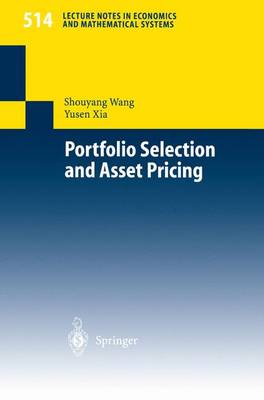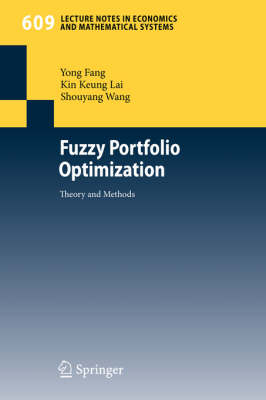Lecture Notes in Economics and Mathematical Systems
2 primary works
Book 514
In our daily life, almost every family owns a portfolio of assets. This portfolio could contain real assets such as a car, or a house, as well as financial assets such as stocks, bonds or futures. Portfolio theory deals with how to form a satisfied portfolio among an enormous number of assets. Originally proposed by H. Markowtiz in 1952, the mean-variance methodology for portfolio optimization has been central to the research activities in this area and has served as a basis for the development of modem financial theory during the past four decades. Follow-on work with this approach has born much fruit for this field of study. Among all those research fruits, the most important is the capital asset pricing model (CAPM) proposed by Sharpe in 1964. This model greatly simplifies the input for portfolio selection and makes the mean-variance methodology into a practical application. Consequently, lots of models were proposed to price the capital assets. In this book, some of the most important progresses in portfolio theory are surveyed and a few new models for portfolio selection are presented. Models for asset pricing are illustrated and the empirical tests of CAPM for China's stock markets are made. The first chapter surveys ideas and principles of modeling the investment decision process of economic agents. It starts with the Markowitz criteria of formulating return and risk as mean and variance and then looks into other related criteria which are based on probability assumptions on future prices of securities.
Book 609
Most of the existing portfolio selection models are based on the probability theory. Though they often deal with the uncertainty via probabilistic - proaches, we have to mention that the probabilistic approaches only partly capture the reality. Some other techniques have also been applied to handle the uncertainty of the ?nancial markets, for instance, the fuzzy set theory [Zadeh (1965)]. In reality, many events with fuzziness are characterized by probabilistic approaches, although they are not random events. The fuzzy set theory has been widely used to solve many practical problems, including ?nancial risk management. By using fuzzy mathematical approaches, quan- tative analysis, qualitative analysis, the experts’ knowledge and the investors’ subjective opinions can be better integrated into a portfolio selection model. The contents of this book mainly comprise of the authors’ research results for fuzzy portfolio selection problems in recent years. In addition, in the book, the authors will also introduce some other important progress in the ?eld of fuzzy portfolio optimization. Some fundamental issues and problems of po- folioselectionhavebeenstudiedsystematicallyandextensivelybytheauthors to apply fuzzy systems theory and optimization methods. A new framework for investment analysis is presented in this book. A series of portfolio sel- tion models are given and some of them might be more e?cient for practical applications. Some application examples are given to illustrate these models by using real data from the Chinese securities markets.

